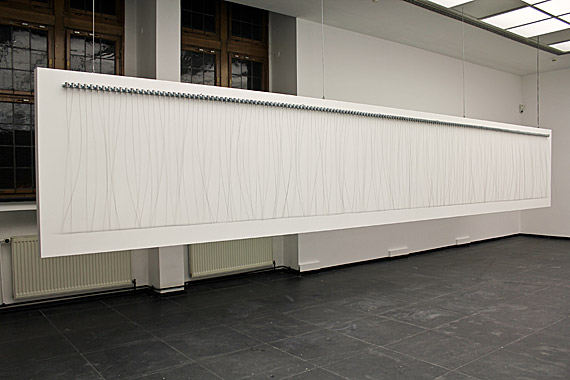The theme is Generative Art and Design.
The first project that I will discuss is the Snow Angels to Angelic Forms project by Dominic Harris and Cinimod Studio
http://www.creativeapplications.net/featured/ice-angel-by-dominic-harris-from-snow-angels-to-angelic-forms/
This project consists of an array of lights that trace the sweeped form of a users arms when they mimic the time old tradition of making a snow angel. It is an example of creating form from the union of many points in time and curiously is modeled after an anti-form as snow angels are normally defined to be a region in snow that is vacant of material. I like this project, because it is an example of art based on a fun activity and I like fun activities. I also like arrays of lights and forms defined by a movement in time.
I think that the choice to use colored circles to represent the intensities creates a very aesthetically pleasing effect. I am wondering why the work needs to be restricted to Angels, shouldn’t the user be able to draw anything potentially? I wonder if it would be possible to create a project that allows the user to view an anti-form traced in 3D space, kind of like the Rain Room project by Random International:
http://www.moma.org/visit/calendar/exhibitions/1380
abstrakt-abstrakt-zimoun
http://www.generatorx.no/20101218/abstrakt-abstrakt-zimoun/
This is a project that experiments with an array of 1 dimensional wires in space. Each wire is manipulated by a motor and the individual motors are linked together due to deterministic behavior rules. The behavior rules evolve the wire colony over time such that their form of the wires displays rejection, collusion, and other spatially indicative behaviors.
This work reminds me of lots of work with Genetic algorithms. I like the idea that very simple forms can use deterministic behavior to represent behaviors that might have emotional significance. One problem I find with work of this nature is that due to the length of the array, I am not sure that there are sufficiently many patterns of behavior to justify the length of the piece.

